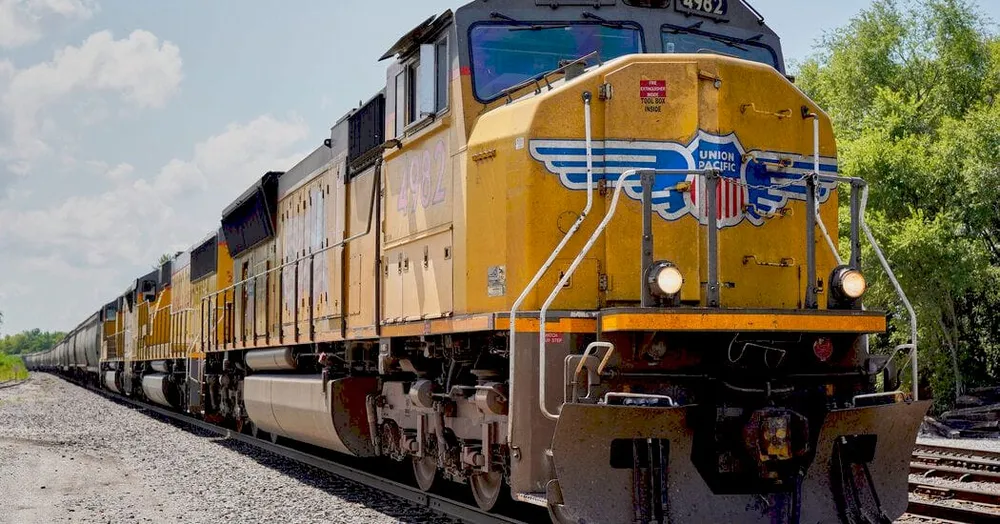In a bold move that could redefine the landscape of American freight transportation, Union Pacific announced an $85 billion bid to acquire Norfolk Southern, aiming to create the first transcontinental railroad in U.S. history valued at over $200 billion. If approved, this deal will unite Union Pacific’s extensive network in the west with Norfolk Southern’s strong presence in the east, forming a giant capable of seamlessly transporting goods from the Pacific to the Atlantic.
Union Pacific CEO Jim Vena, an experienced veteran of the railroad industry, called the deal transformational, asserting that it will streamline supply chains for raw materials and industrial goods, from the timber of the Pacific Northwest to steel in Pittsburgh. “Railroads have been the backbone of the American economy since the industrial revolution,” Vena stated. “This merger marks the next phase of their evolution, providing faster and cheaper transportation in an age of global competition.”
The proposal includes $20 billion in cash and stock swaps, valuing Norfolk Southern at approximately $320 per share — a significant premium compared to its $260 share price at the start of the month. Markets responded cautiously: Union Pacific shares rose nearly 2% to $231.03 in pre-market trading, while Norfolk Southern shares declined 2% to $280, reflecting investor caution regarding potential regulatory hurdles.
Synergy or Monopoly?
The railroads forecast annual synergies of $2.75 billion through route efficiencies and operational cost reductions. The combined network will eliminate the need for freight transfers in the country’s interior, currently a weak point in logistics. However, the deal will inevitably face scrutiny from the U.S. Surface Transportation Board (STB), which, after the chaotic mergers of the 1990s, has set high standards for consolidating the rail industry.
History serves as a stern reminder. In 1996, Union Pacific’s merger with Southern Pacific led to major delays disrupting freight movement in the western U.S. Similarly, the division of Conrail between Norfolk Southern and CSX in 1999 caused chaos in the east. These episodes prompted regulators to be cautious of any deals that could disrupt the fragile balance in an industry that transports 40% of the country’s freight by volume.
Domino of Consolidation
If approved, the deal could trigger a domino effect in an industry with only six major freight railroads remaining. BNSF, owned by Warren Buffett’s Berkshire Hathaway, and CSX are likely to feel pressure to merge in order to compete with the new giant. Canadian railroads such as Canadian National and CPKC might also enter the consolidation race, striving to stay competitive in the North American market.
Industry insiders speculate that Buffett, who holds $348 billion in cash via Berkshire Hathaway, may be considering one last major deal before stepping down as CEO. Although Buffett recently denied rumors of engaging Goldman Sachs for rail deal consultations, his history of large acquisitions — such as the $26.3 billion purchase of BNSF in 2009 after a private meeting — suggests he could act quickly and decisively.
Regulatory and Economic Outlook
Antitrust regulators are likely to focus on the potential impact on competition and consumers. The combined Union Pacific-Norfolk Southern railroad would control a significant share of U.S. freight, which could lead to higher tariffs or lower service quality if competition declines. At the same time, railroads argue that the deal will promote economic efficiency, reducing delivery times and costs for producers and consumers.
There is widespread debate about whether the STB is willing to approve such a large-scale consolidation. Critics point to lessons from the 1990s, when mergers led to delays and economic losses. Supporters argue that modern technology and improved logistics can mitigate these risks, allowing the industry to adapt to a globalized economy’s demands.
Looking to the Future
Union Pacific’s proposal is more than a financial transaction; it is a bet on the future of American infrastructure. As the country grapples with supply chain challenges and economic competition from China and Europe, creating a transcontinental railroad could be a crucial step. However, the path to realization will be paved with regulatory and political hurdles that will test Union Pacific’s ambitions and its ability to persuade the nation of the necessity of this giant leap.


